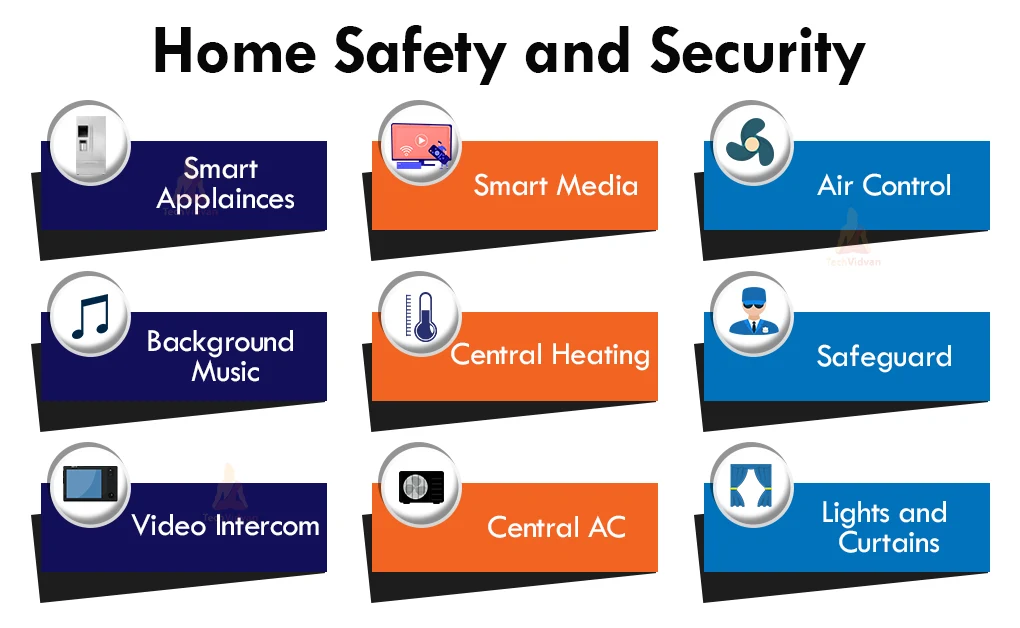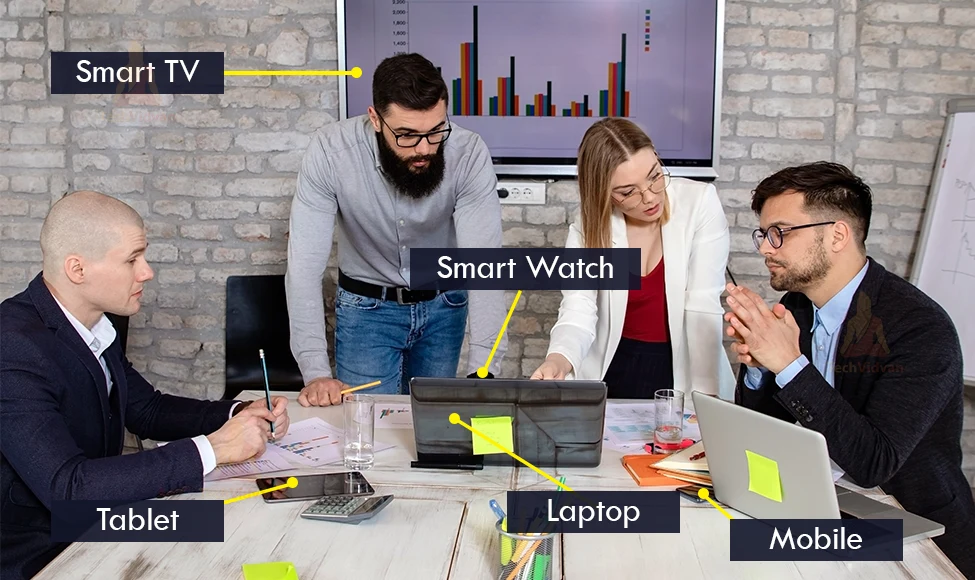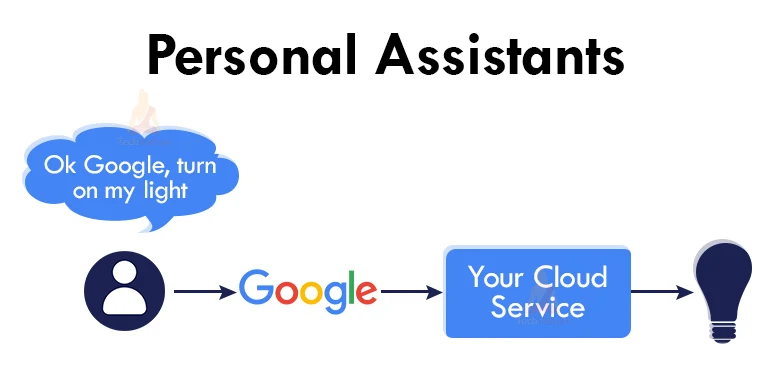IoT Consumer Applications
What is consumer IoT(CIoT)
The applications of IoT including hardware and software systems that consumers can access and use come under the consumer Internet of Things category. Each of the IoT devices come with a UID(Unique identification) to easily notice and access the devices.
IoT integrates these devices with protocols and standards. These protocols offer security performance and reliability. This makes it easier to share and communicate with the data from one device to another through a standard computer.
Consumer IoT is mainly divided into two parts:
1. Personal IoT:
- Devices that are used for personal use such as watches and phones come under the personal category of consumer IoT.
- They include devices such as smart shirts, smart watches, wearables, smartphones and so on.
2. Smart home IoT:
- Smart Home involves home appliances operating under an IoT ecosystem. These devices have access to the internet, sense the environment around them and retrieve data from devices simultaneously.
- Smart homes include devices such as smart TVs, smart ovens, smart geysers, smart refrigerators, thermostats, voice assistance, security systems, lightning controllers and family entertainment devices.
Evolution of general consumer IoT
Consumer Applications of IoT is turning out to be a huge market that makes a large number of sales. Most of the purchases are for smart watches, electronics, television systems, virtual reality and health tracking. IoT makes lives easier and more people are purchasing the devices to control and track their lifestyle.
Size of market and future trends of consumer IoT
The Iot market has a huge potential and the competition is tough. Various technological companies are offering Iot based solutions for cities, industries, offices and homes. They use technologies such as machine learning, AI, 5G, big data and edge computing.
The consumer IoT is setting examples for ruling the market with applications such as personal asset tracking, home security, smart cities and smart wearables.
By 2026, the consumer IoT market will be worth 153.80 Billion US dollars according to a Global Consumer IoT market report. Home automation devices with features such as security, remote management and smart energy will dominate the IoT market by 2023.
a. Home safety and security
- Smart homes are one of the most rising uses of the Internet of Things. Iot controls the entire operation at homes and reduces the need of maids, cooks and drivers.
- IoT monitors your arrival time and accordingly sets the temperature and lighting of the house.
- It heats up the food, plays light music and so much more.
- An IoT kitchen is capable of preparing meals on the basis of your taste and health requirements.
- Iot takes care of children at home by tracking and monitoring their movement and food intake.
- It sends alerts in case of an emergency.
- Also, it secures and protects your house 24/7. It senses physical movements at boundaries and raises an alarm in case of suspicious activity.
b. Work and office environment
IoT at the workplace reduces time and cost effectively.
- IoT devices in meeting halls record meetings and take down necessary bullet points and automatically send a copy of the briefs to every client in the room.
- It adjusts the board room temperature, switches on the lights and prepares the presentation before the meeting.
- It sends alerts and notices for deadlines, important events and conferences.
- IoT can track company growth and progress, calculate net profits and losses and foresee the future of the brand or company.
- It can calculate market trends and help companies produce better products and goods.
c. Entertainment and lifestyle
- The Internet of things has made a remarkable impact on the night life of many countries. IoT is set to become an essential technology in attracting tourists and customers.
- Hotels, bars and restaurants are using Iot enabled devices to track their customers choices in order to provide better facilities. This in turn is raising the overall brand identity.
- Iot sponsored guides help you find the best spots in the city to have an entertaining evening. They guide you to the destination and brief you about the site.
- Vacation planning is easier with the help of IoT. IoT analyzes your budget and choices and lists out the destinations accordingly. It plans hotel room booking and popular tourist site tickets to save time and confusion.
d. Personal Assistants
Popular personal assistants include Google Assistant, Alexa by Amazon, Siri. These assistants are Iot devices that can sense human voice and use transducers to convert them into electrical signals which are then understood by the devices to generate necessary responses.
- IoT assistants are capable of doing a variety of functionality. They can play music, tell temperatures, calculate numbers, list out the recipe for a dish, set alarms and reminders, generate information on any topic.
- It uses location sensors, tracking software, GPS, mobile phone apps, Radio Frequency ID, networks and protocols to generate accurate and precise responses. This is the power of IoT. It makes lives easier and smoother.
e. Smart Wearables
There is growing demand around the globe for wearable tech. These devices include smart watches, Bluetooth key tracker, Smart belts, GPRS body control, smart earphones and smart finger devices.
- Smart watches monitor your health and track the number of daily steps, calories and heart pulse. Consumers purchase fit bands and smart wrist watches to keep a track on their health and calorie intake.
- Smart devices can be worn as an accessory or implanted in your body.
- The devices are constantly sending and receiving data via the internet
f. Medicine and healthcare
- Patients with chronic diseases such as kidney diseases and autoimmune diseases can visit their doctors remotely, ask doubts about medicines and need not leave their homes.
- Online portals record patient details which the doctors can then access. This is an electronic health record and it is a prime application of IoT
- IoT shifts the baseline of healthcare and helps heal patients more easily. IoT also reduces the work of doctors and nurses significantly.
g. Personal Asset Tracking
Asset tracking is a popular and rising consumer application of IoT. Through asset tracking one can check the status and condition of any of their assets. These assets include their pets, vehicles, homes and home appliances.
One can track any of their possessions with LPWAN technologies such as LoRa, NBC, SigFox and so on.
h. Fostering elders
Technologies such as motion sensors, microphones and monitoring systems enable people to look after the elderly relatives from long distances. The young family member may not always be available to look after the elderly but they can monitor the health status of their loved ones from far away at any given time.
IoT applications offer 24*7 support and care for elder citizens.
i. Consumer Healthcare: remote patient monitoring
Doctors and medical staff handle more than one patient at a given time. In case, the condition of a patient worsens it gets difficult to check up on other patients. IoT offers solutions such as remote monitoring where the doctor need not be physically present to check on the health status of a patient who is not in any serious health condition. The IoT systems check the blood and glucose levels of the patient and report to the doctor in case of emergencies. This way the doctors focus their attention on patients that require serious attention.
j. Health Record Interoperability
IoT has made it possible to record every patient’s health details for future use. As a result of which, every time a patient visits the doctor, his file details already contain his health details and the patient need not waste time in filling out forms every time he or she visits the doctor.
EHR(electronic health records) are online portals to record and monitor the health status of every individual. EHR stores the information in a cloud that allows access to patients to monitor and record their health status remotely.
k. Caregiving
Nowadays, individuals and young adults have an extremely busy lifestyle. There is a lot to keep up with in this generation as compared to the older generations. In the midst of the hustle, individuals find it hard to check up on the condition of their loved ones.
IoT offers systems that monitor and record the movements of babies and elderly family members. These IoT devices include sensors and webcams. An application in the smartphones raises an alert in case of unidentified activity.
Conclusion:
The internet of things is a booming technology with lots of consumer applications as we have just seen above. It is predictable to assume that consumers will surely benefit from this rise in IoT technology worldwide.



